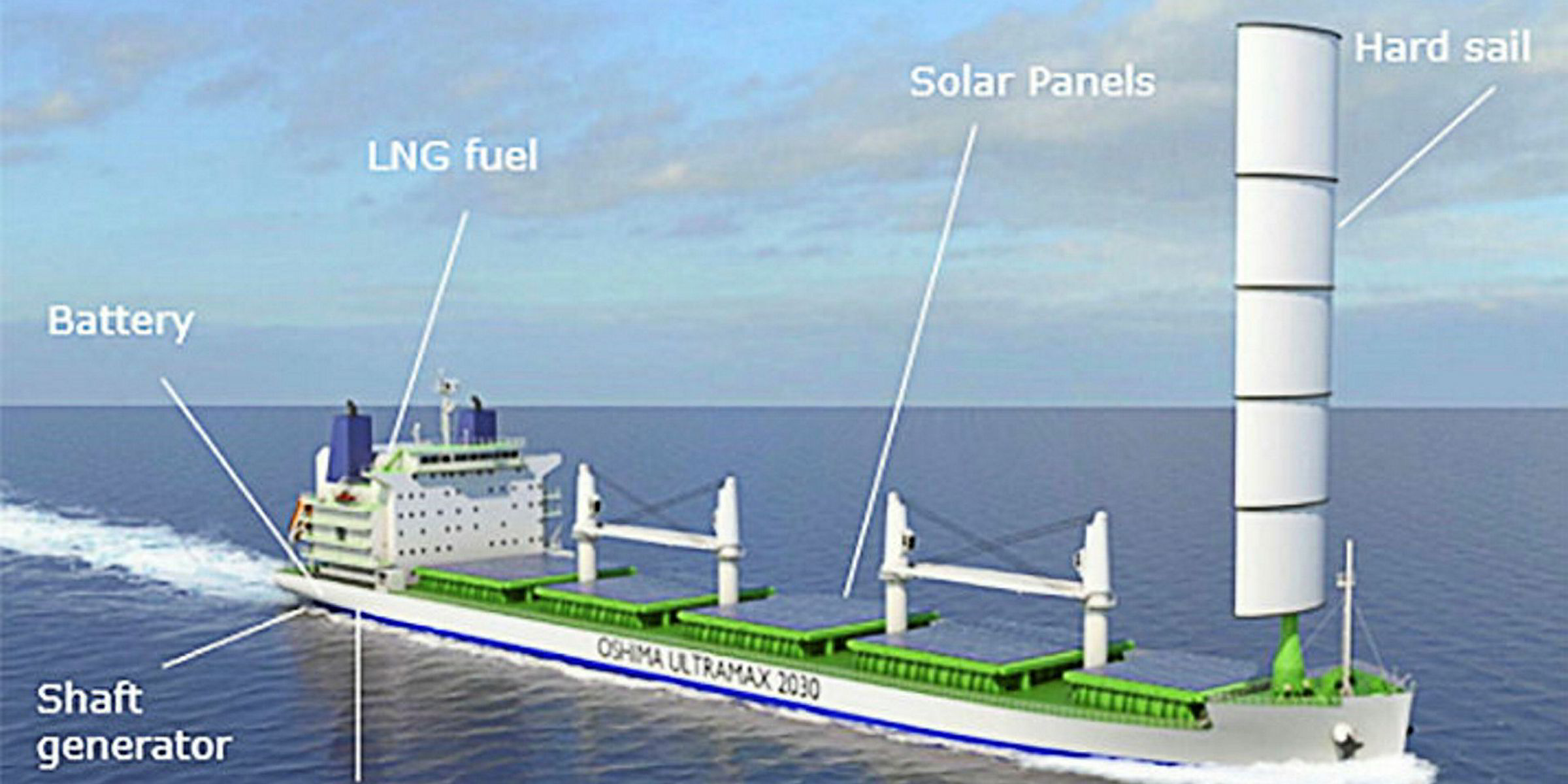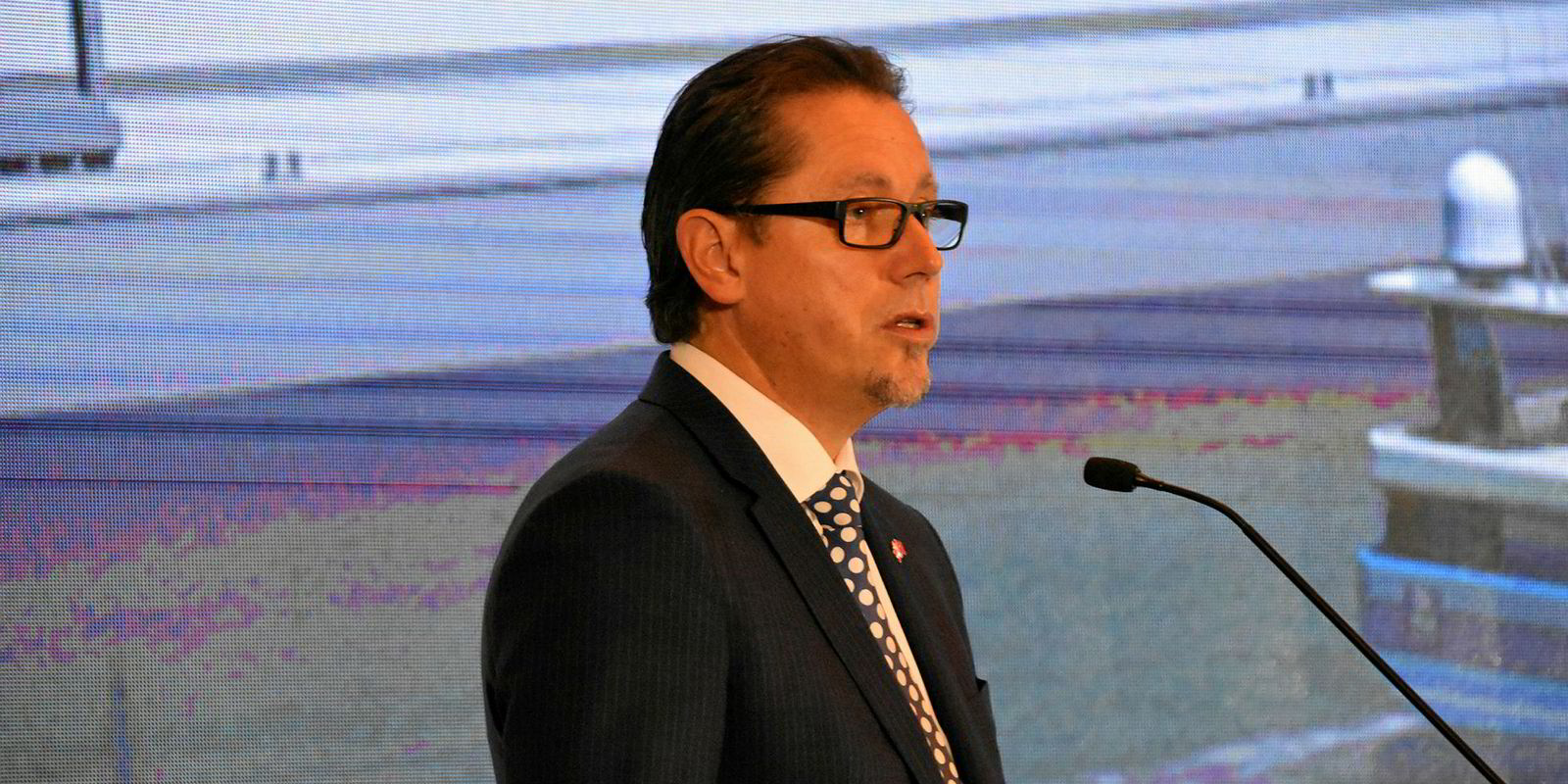Oshima Shipbuilding and class society DNV GL have launched a new design of bulk carrier that would use half the energy of conventional vessels and utilises wind, LNG fuel, battery and solar power.
The Oshima Ultramax 2030 bulker design has an energy efficiency design index (EEDI) 50% lower than comparable vessels, according to a joint release from the partners.
“To help the industry meet the ambitious [greenhouse gas] reduction targets set by the IMO, the industry needs to come together to advance ship design, taking advantage of both existing and new technologies,” said Trond Hodne, DNV GL's director of sales and marketing.
The ultramax design features an "optimised" hull shape and a sail to generate extra propulsion, the release said.
Solar panels allow the design to offer "ultra-low" emissions in port and a battery to cover the hotel load during waiting times and port operations, according to the partners.
The design, which was developed with engine manufacturer Wartsila, was launched at last week's Nor-Shipping event in Oslo.
Oshima Shipbuilding and DNV GL have signed a long-term strategic cooperation agreement, under which they will develop and update a roadmap to meeting the IMO's zero-emissions scenario in 2030.
Outcomes from the roadmap project will be gradually implemented through annual joint industry projects, where other partners will be invited to join.





